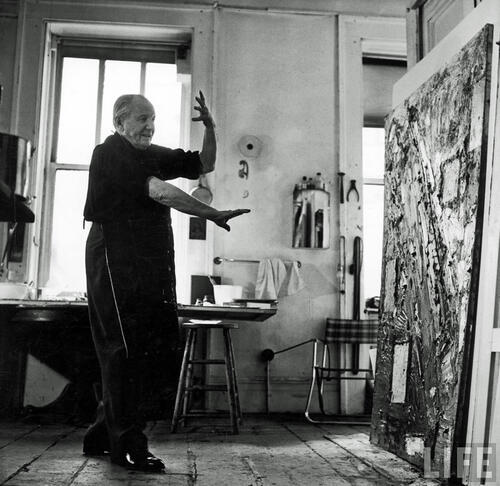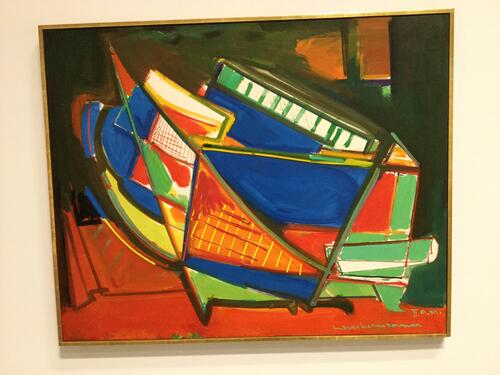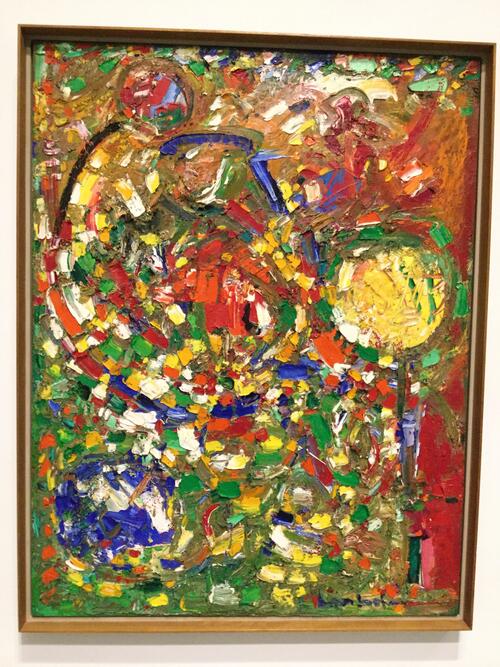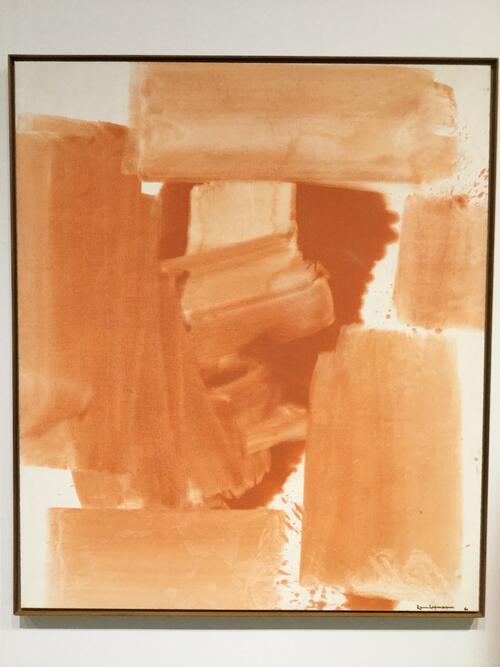
Starting February 27th and running until July 21, 2019, the Berkeley Art Museum and Pacific Film Archive is hosting a retrospective of Hans Hofmann, known to many as one of the most influential and pioneering abstract painters of the 20th century.

Chimbote Mural Fragment of Part I (Study for Chimbote Mural), 1950
For those of you unfamiliar with Hofmann, let me give you the scoop: growing up in Munich as a child in the late 19th century, Hofmann was originally drawn to science and mathematics (not so exclusive from the world of art, as BAMPFA may remind you) and eventually worked as an engineer for the state. However, living in Munich during this time would ultimately lead to a love affair with the arts, as a community of writers, musicians, and painters (such as Thomas Mann, Rainer Maria Rilke, and Wassily Kandinsky) were thriving close by.
After studying painting himself, Hofmann attracted the attention of a wealthy patron and was able to move to Paris in the early 1900s, right alongside major players like Picasso, Juan Gris, and Matisse. Hofmann definitely picked the right time to scope out the Parisian art scene, and he would be forever changed by the experience.

Studio, 1947
Hofmann would go on to set up his own school in Germany, and, in the early 30s, as War World II loomed ahead, he would be invited to teach in the United States at UC Berkeley for a couple of summers. Though the artist would go on to spend most of his life working and teaching on the East Coast, his beginnings in Berkeley were significantly influential, and his later donations to BAMPFA (the museum has the most extensive collection of Hofmann paintings in the world) certainly confirm this. It’s fitting, then, that this show is being held here.

The Garden, 1956
One fascinating aspect of this exhibit is Hofmann’s works being organized chronologically, across the span of his lifetime. As you walk through, you can get a really tangible sense of his artistic intentions and tastes as they developed over time, both in a historical context (historians have wondered: who did “drip painting” first, Hans Hofmann or Jackson Pollock??) as well as in a personal one. You can observe which techniques he first experimented with, which ones he maintained as he matured as an artist, and which ones he left behind.
For instance, the painting above employs a technique similar to that of Alma Thomas’s “lozenge-shaped brushstrokes,” although to a dramatically different effect. It was interesting to observe this similarity, but equally interesting to note it did not appear much elsewhere in the show. Hofmann was always experimenting with something new!

Agrigento, 1961
For those of you that don’t think you can “get” Abstract Expressionism, you shouldn’t let it keep you from checking out this exhibit. While it was fascinating to listen to curator Lucinda Barnes discuss in technical detail the relationships between space, color, and shape in Hofmann’s work during our tour, it was also just as enjoyable to simply sit with these paintings by myself and consider them “un-intellectually,” just as beautiful and mysterious compositions present in front of me.

Cataclysm, 1945

Goliath, 1960
There’s a lot that cannot be said for Hofmann’s work, as well as Abstract Expressionism in general—and yet this style can be so profoundly compelling for so many people. I think that’s sort of the point. I encourage everybody, if you’re in the area, to come spend some time with these paintings, without expectation, just to enjoy the compositions, the colors and arrangement of space on each canvas, and maybe even try to pick out a favorite!









